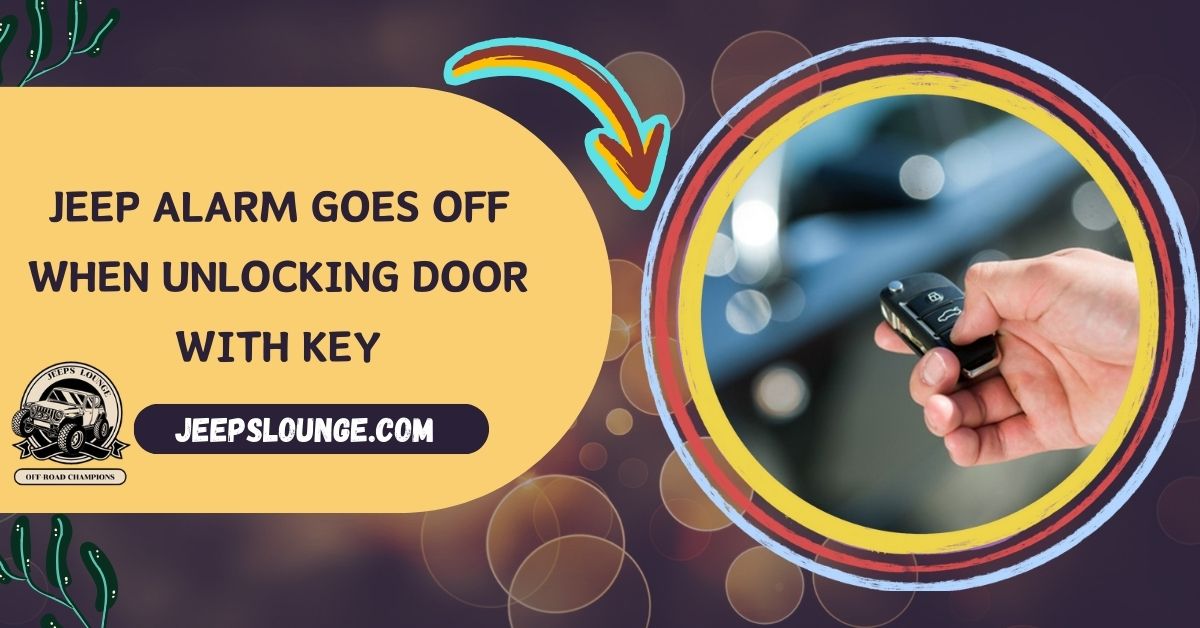Ruggedness, capability, and off-road prowess are the hallmarks synonymous with the Jeep brand. As the electric vehicle (EV) revolution gathers momentum, Jeep isn’t just joining the ride; it’s pushing boundaries with innovative technologies like the Service Electric Brake System (SEBS).
Compared to traditional mechanical or hydraulic brakes, SEBS offers the advantage of regenerative braking for extended range and reduced wear and tear. However, it can be a more complex system with potentially higher initial costs and limited availability than simpler braking systems.
When more forceful stopping is needed, the friction brakes seamlessly kick in, ensuring a smooth and controlled deceleration.
Table of Contents
The Advantages Of Sebs In Jeep Evs:
The Service Electric Brake System (SEBS) isn’t just a technical marvel; it’s a treasure trove of benefits for Jeep drivers and the environment. Let’s delve into the key advantages that elevate the driving experience and redefine electric mobility:
Range Anxiety? Not With Sebs:
The regenerative braking magic of SEBS works wonders for your electric range. As you slow down, the electric motor acts as a generator, capturing kinetic energy and feeding it back into the battery.
This translates to more miles per charge, reducing range anxiety and letting you explore further on a single charge. Imagine conquering challenging off-road trails without constantly worrying about finding a charging station – that’s the freedom SEBS offers.
Braking That Bites, Not Barks:
When it comes to performance, SEBS doesn’t compromise. Whether navigating city streets or traversing rocky paths, SEBS guarantees confident and predictable braking, letting you focus on the adventure, not the brakes.

Save Money, Save The Planet:
SEBS isn’t just good for your driving experience; it’s kind to your wallet and the environment. Choose SEBS and choose sustainability, one brake pedal at a time.
Smooth Operator:
Forget the jerky stops and jarring noises associated with traditional braking. SEBS delivers a smooth, quiet braking experience, making every journey more comfortable and enjoyable.
The seamless transition between regenerative and friction braking ensures a refined driving experience, allowing you to appreciate nature’s serenity or the electric motor’s hum without any unwanted interruptions.
The Future Is Braking Bright:
The data collected from SEBS paves the way for future advancements in driver-assistance features like automatic emergency braking and hill descent control. Imagine your Jeep EV anticipating hazards and adapting braking accordingly or effortlessly tackling steep inclines confidently.
How Service Electric Brake System Works In Your Jeep Ev:
The Service Electric Brake System (SEBS) in your Jeep EV isn’t just a braking mechanism; it’s an orchestra of technology working harmoniously.
Regenerative Braking: Reclaiming Energy On The Go:
Imagine slowing down and simultaneously charging your battery! That’s the magic of regenerative braking. When you lift your foot off the
As the wheels slow down, they turn the engine, converting kinetic energy into electricity fed back into the battery. It’s like putting your car in reverse – except instead of using electricity to move the wheels, you’re using the wheels to generate electricity! This extends your driving range and reduces wear and tear on traditional brakes.
Friction Brakes: Stepping In When Needed:
While regenerative braking shines for everyday slowing down, there are times when more immediate and forceful stopping is required. That’s where the traditional friction brakes come in. Similar to gasoline-powered vehicles, these brakes use friction between pads and rotors to stop your Jeep EV completely.
However, SEBS doesn’t simply activate them whenever needed. The system intelligently blends regenerative and friction braking, prioritizing the former whenever possible and seamlessly switching to the latter for more complex braking situations or when regenerative braking has reached its limits.
Advanced Features:
Taking Braking to the Next Level: SEBS isn’t just about essential braking; it’s packed with additional features that elevate your driving experience. For example, hill hold assist prevents your Jeep EV from rolling back when stopped on an incline, making hill starts effortless.
Jeep Ev Models Equipped With Service Electric Brake System
The Service Electric Brake System (SEBS) is a crucial technology in all current Jeep EV models, offering efficient and capable braking performance. Here’s a quick overview of these models:
Jeep Wrangler 4xe Plug-In Hybrid:
This iconic off-roader gets a hybrid boost with SEBS, combining a 2.0L turbocharged gasoline engine with two electric motors. SEBS seamlessly utilizes regenerative braking to recapture energy and extend its electric range while providing confident stopping power on any terrain.
Jeep Grand Cherokee 4xe Plug-In Hybrid:
The Grand Cherokee 4xe combines luxury and capability, offering a blend of a 2.0L turbocharged gasoline engine and two electric motors. In this model, SEBS ensures smooth and controlled braking on city streets and rugged adventures.

Jeep Gladiator 4xe Plug-In Hybrid:
The versatile Gladiator 4xe brings open-air freedom and electric efficiency together. Its SEBS system works with the 2.0L turbocharged gasoline engine and electric motors to deliver confident braking for daily commutes and off-road excursions.
Variations And Differences:
While all Jeep EV models share the core SEBS technology, there might be slight variations in implementation across different models and trim levels. These differences could include:
Regenerative Braking Strength: Some models offer adjustable regenerative braking levels, allowing drivers to personalize how much energy is recovered during deceleration.
Additional Braking Features: Certain trims might have advanced features like hill descent control or brake-torque vectoring for enhanced off-road capability.
Battery Capacity: Larger battery packs could enable greater energy recapture through regenerative braking, extending the overall electric range.
You should consult the specific details and specifications of your chosen Jeep EV model for a more precise understanding of its SEBS implementation.
Service Electric Brake System In The Spotlight: Comparison Of Braking System In Evs:
The Service Electric Brake System (SEBS) stands out as a unique technology in Jeep EVs, but how does it fare against other standard EV braking systems? Let’s delve into a comparative analysis:
The Competitors:
Mechanical Brakes: This traditional system relies on friction between pads and rotors to slow down the vehicle, similar to gasoline-powered cars. While simple and reliable, it lacks the energy recuperation capabilities of regenerative braking.
Hydraulic Brakes: Like mechanical brakes, they utilize friction but employ hydraulic fluid to amplify the force applied to the pads, offering more stopping power with less pedal effort. However, they also lack regenerative capabilities.
Sebs: Standing Out From The Crowd:
Regenerative Braking: SEBS’s defining feature is its ability to recapture kinetic energy during deceleration and feed it back into the battery, extending the electric range significantly. This sets it apart from both mechanical and hydraulic brakes.
Enhanced Performance: The seamless integration of regenerative and friction braking in SEBS allows for precise and responsive stopping power, even on uneven terrain. This can be advantageous over purely mechanical or hydraulic systems, especially in off-road scenarios.
Reduced Wear and Tear: By prioritizing regenerative braking, SEBS reduces reliance on traditional friction brakes, potentially lowering maintenance costs. This benefit isn’t present in purely mechanical or hydraulic systems.
Sebs: Not Without Its Considerations:
Complexity: Compared to simpler mechanical or hydraulic brakes, SEBS is a more complex system with additional components like electric motors and control units. This can lead to higher initial costs and require specialized knowledge for repairs.
Limited Availability: As a relatively new technology, SEBS is only available in a few EV models, including Jeep’s lineup. This might limit your choices compared to vehicles with more traditional braking systems.
Service Electric Brake System And The Future Of Jeep Evs:
From the current lineup of Wrangler 4xe, Grand Cherokee 4xe, and Gladiator 4xe to upcoming next-generation models, SEBS is poised to propel Jeep EVs to new heights of capability and efficiency.
As we look ahead, the future of SEBS is brimming with possibilities. Imagine AI-powered braking, enhanced energy healing, and deeper integration with vehicle dynamics – all contributing to a future where electric off-roading is exhilarating, sustainable, and safer. With SEBS at the forefront, Jeep confidently navigates the braking frontier, ensuring every adventure is electrifying, responsible, and unforgettable.
Related Questions:
Q: What Is Sebs, And How Does It Work?
A: SEBS stands for Service Electric Brake System. This innovative technology in Jeep EVs combines regenerative braking, which captures kinetic energy during deceleration and feeds it back into the battery, with traditional friction brakes for optimal stopping power.
Q: Which Jeep Ev Models Currently Have Sebs?
A: All current Jeep EV models, including the Wrangler 4xe, Grand Cherokee 4xe, and Gladiator 4xe, are equipped with SEBS.
Q: Are There Any Variations In Sebs Functionality Across Different Jeep Ev Models?
A: While the core of SEBS technology remains the same, there might be slight variations in implementation across different models and trim levels. These could include adjustable regenerative braking strength, additional braking features like hill descent control, or differences based on battery capacity and potential energy recapture.
The Verdict: A Balancing Act:
The choice between SEBS and other EV braking systems ultimately depends on your priorities and driving needs. If maximizing range, efficiency, and off-road performance are crucial, SEBS stands out with its regenerative braking and intelligent system. However, traditional mechanical or hydraulic brakes might be suitable if simplicity, lower initial cost, and broader availability are your primary concerns.




